Pollinators around the world face a number of threats, including climate change, pesticides and invasive plants. However, the number one threat for pollinators is likely habitat loss. EALT’s conservation lands protect valuable habitat for pollinators and other wildlife.
With support from Alberta Ecotrust Foundation and others, one of our main projects this year was to restore a patch of invasive weeds into a native pollinator garden at the Smith Blackburn Homestead. The garden will provide food and nesting habitat for many different kinds of pollinators.
Prepping the Garden
The garden area was previously an old corral that had become invaded by creeping thistle, white cockle, and invasive grasses over time. We removed the corral and surrounding fencing to make it more wildlife-friendly and began working on the weeds.
To prepare the garden area, we had the weeds and topsoil removed. While it might seem counterintuitive to remove the topsoil when planting a garden, it actually works in our favour; the native plants thrive when planted straight into the subsoil, much of the weed seedbank was removed with the topsoil, and the weeds have a harder time re-establishing. We waited a month to ensure that the weeds were under control.
Once we were happy with the weeds, we placed tarp and cardboard around the perimeter of the garden as a buffer to prevent the surrounding weeds from creeping back in.
Planting the Garden
With the garden fully prepped, we were ready to plant! We held a volunteer event in the spring to plant over 250 native plants provided by the Edmonton Native Plant Society. To best support a diversity of pollinators, we planted a wide variety of native species with varying flower shapes, colours, and depths. We also made sure that we included species that flowered at different times of the year to maintain a stable food source throughout the season.
We placed cardboard and mulch in between the plants to protect the roots, conserve water, and hamper any initial weed growth as the plants establish themselves. This ended up being a huge help in the hot and dry summer we had this year! We also left some patches of bare soil, which many ground-nesting bee species rely on for nesting and overwintering.
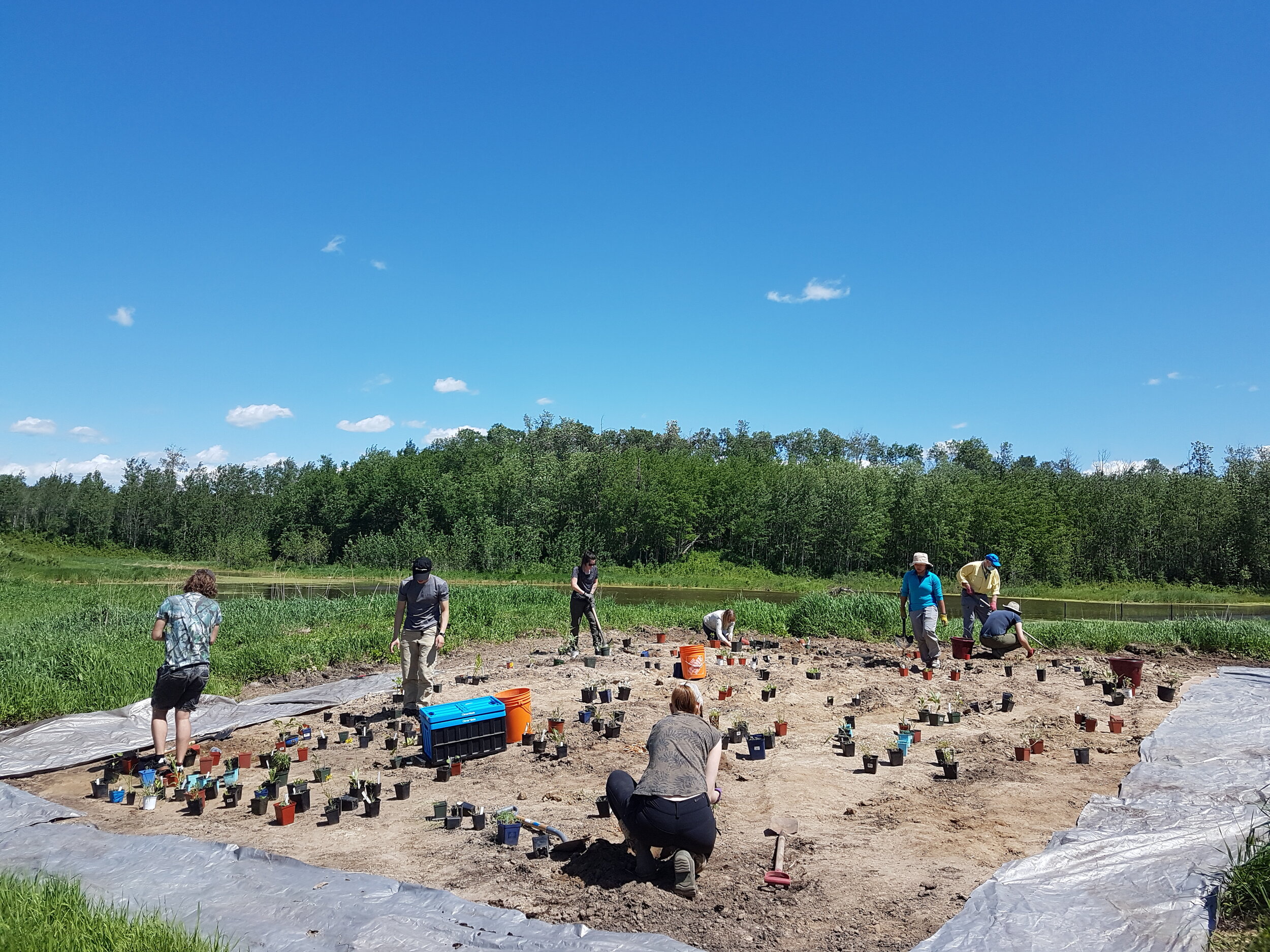
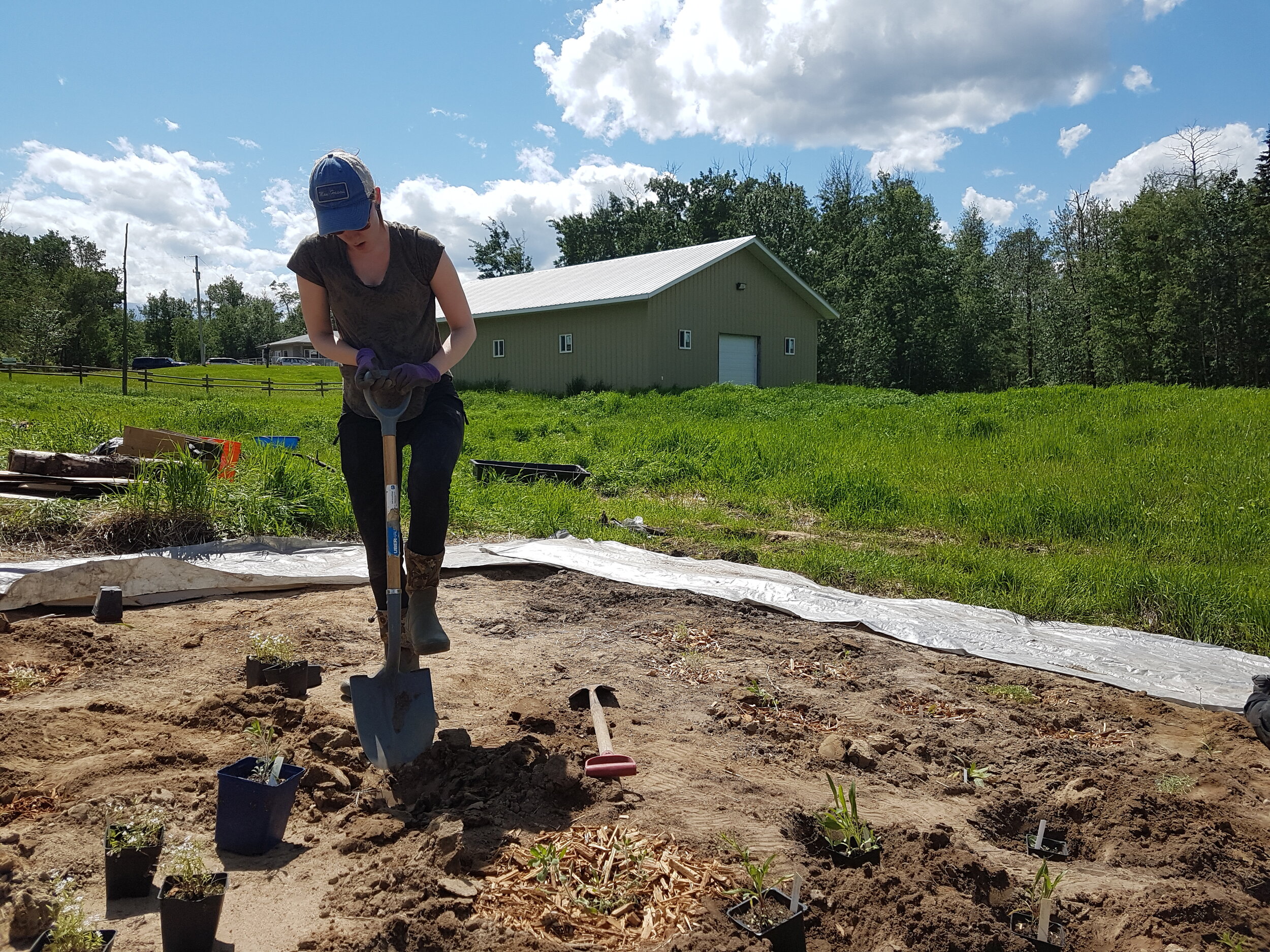
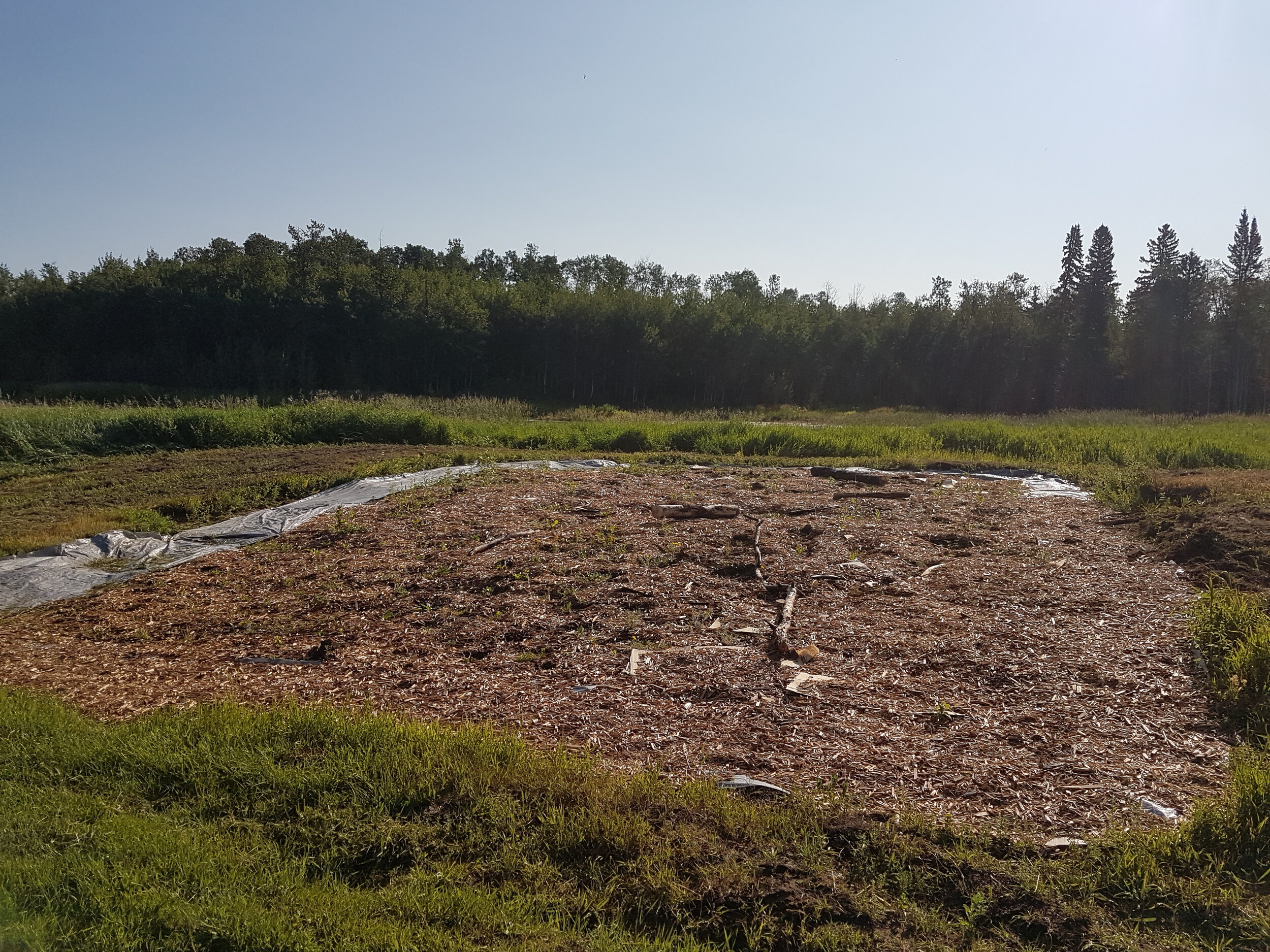
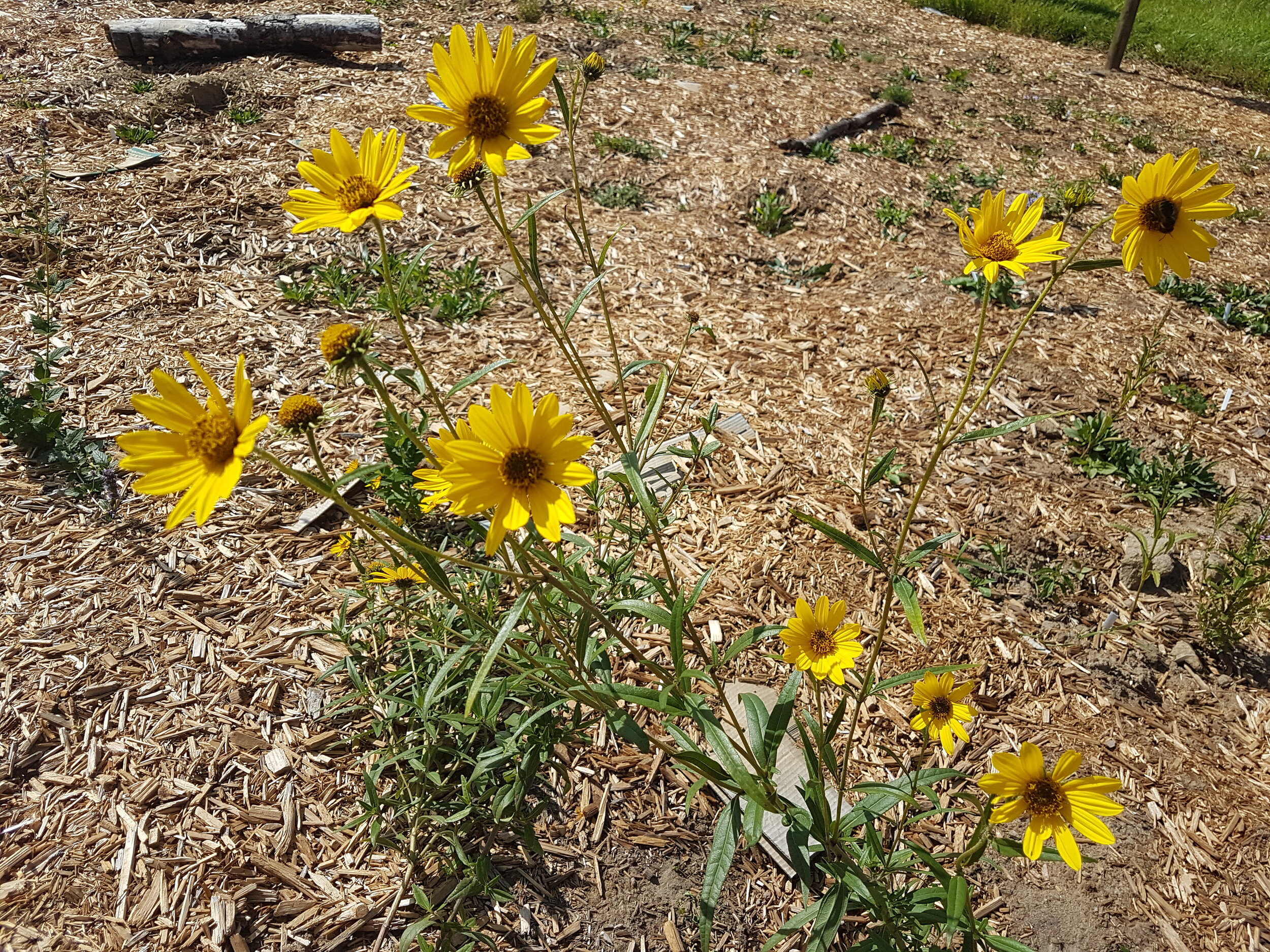
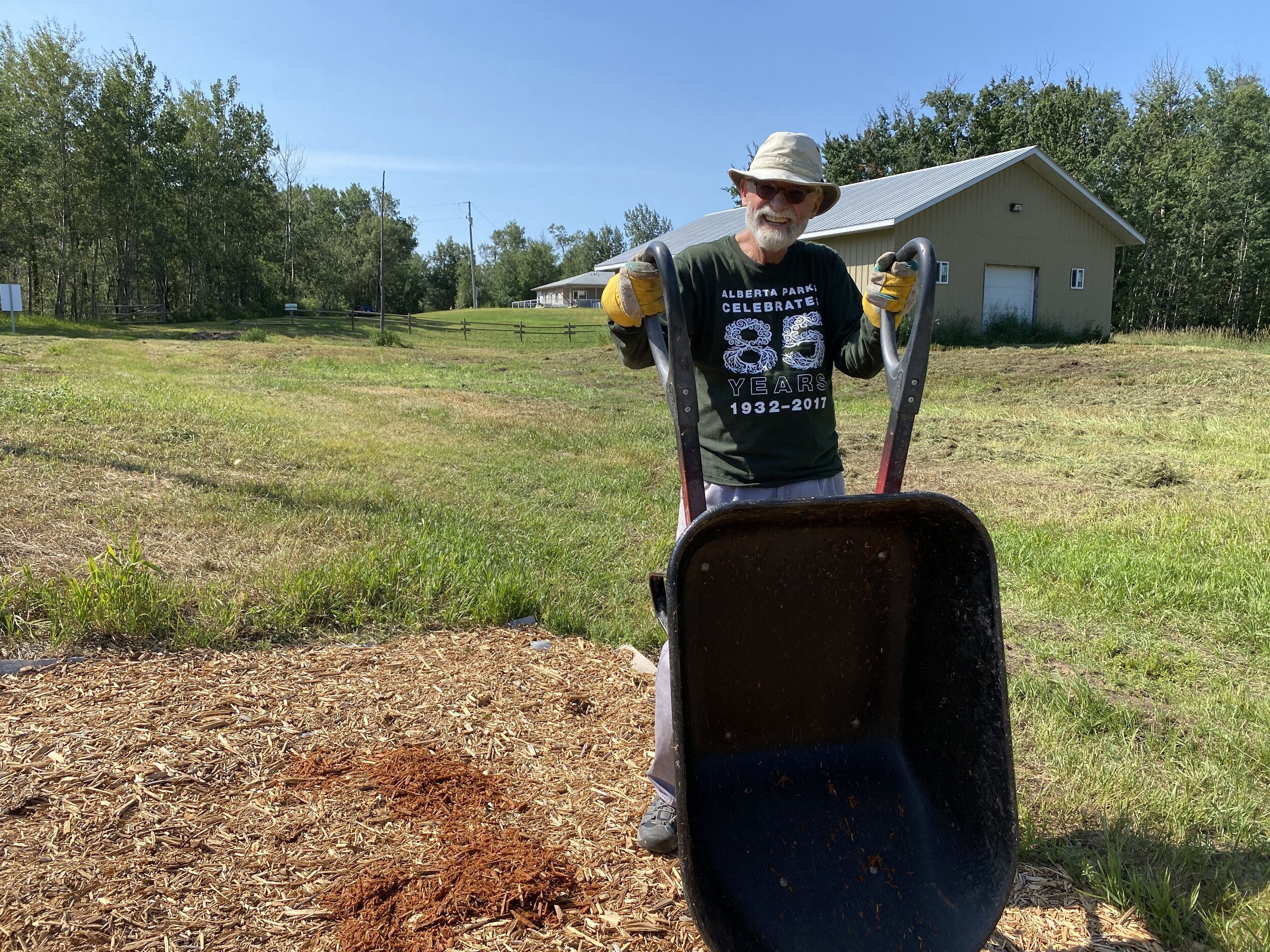

In the fall, we were also able to plant 110 native trees and shrubs in the areas surrounding the garden with support from One Tree Planted and our fantastic volunteers. The “knob and kettle” terrain characteristic of the Beaver Hills Biosphere allowed us to find the perfect places for 12 different tree and shrub species. Birch trees and willows were planted in wetter, lower-lying spots while wild roses, Saskatoons, and snowberry bushes were planted in a higher spot with well-draining soil. Thanks to Medieval Manor Gardens for donating a portion of the planted shrubs.

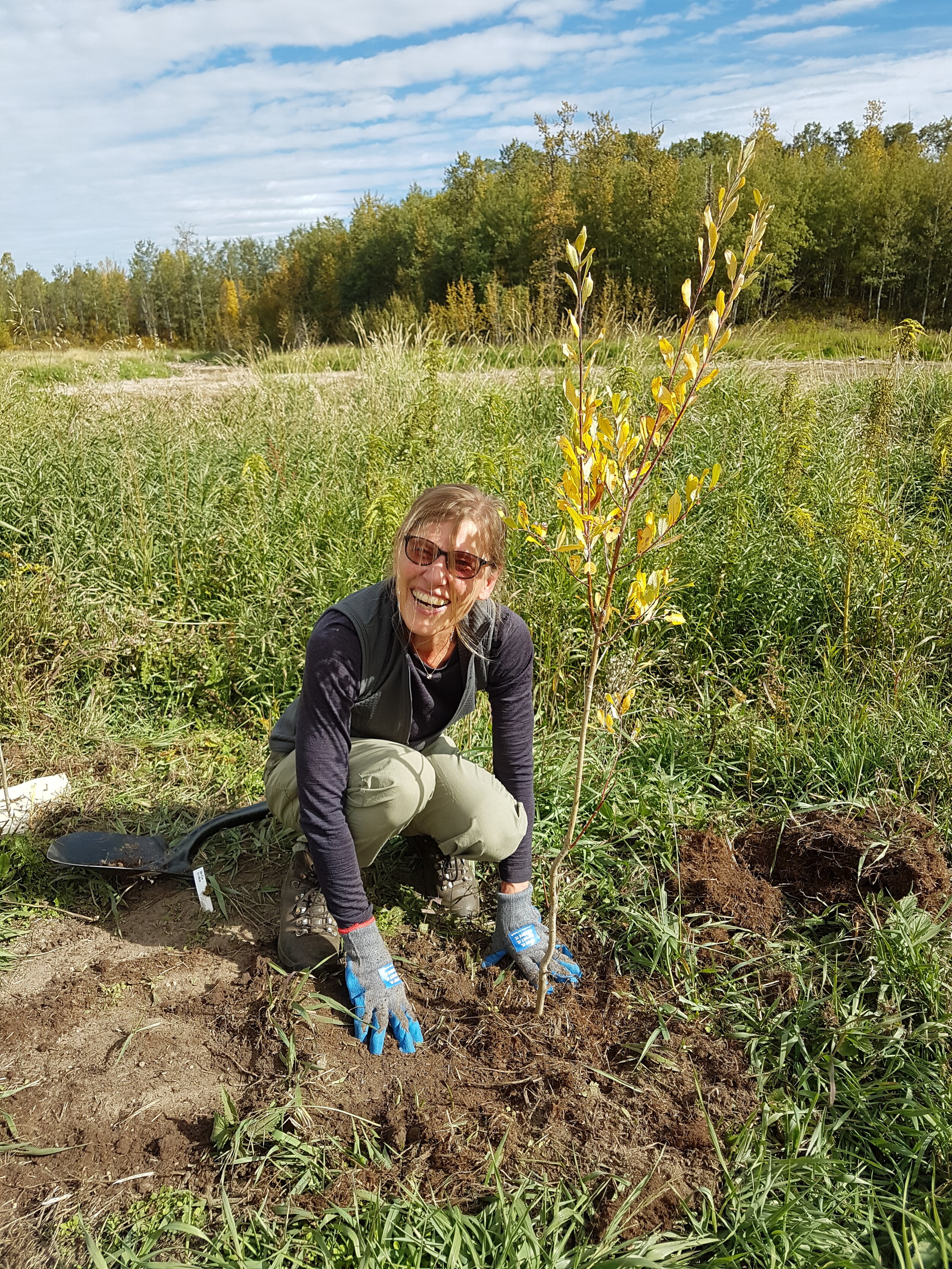
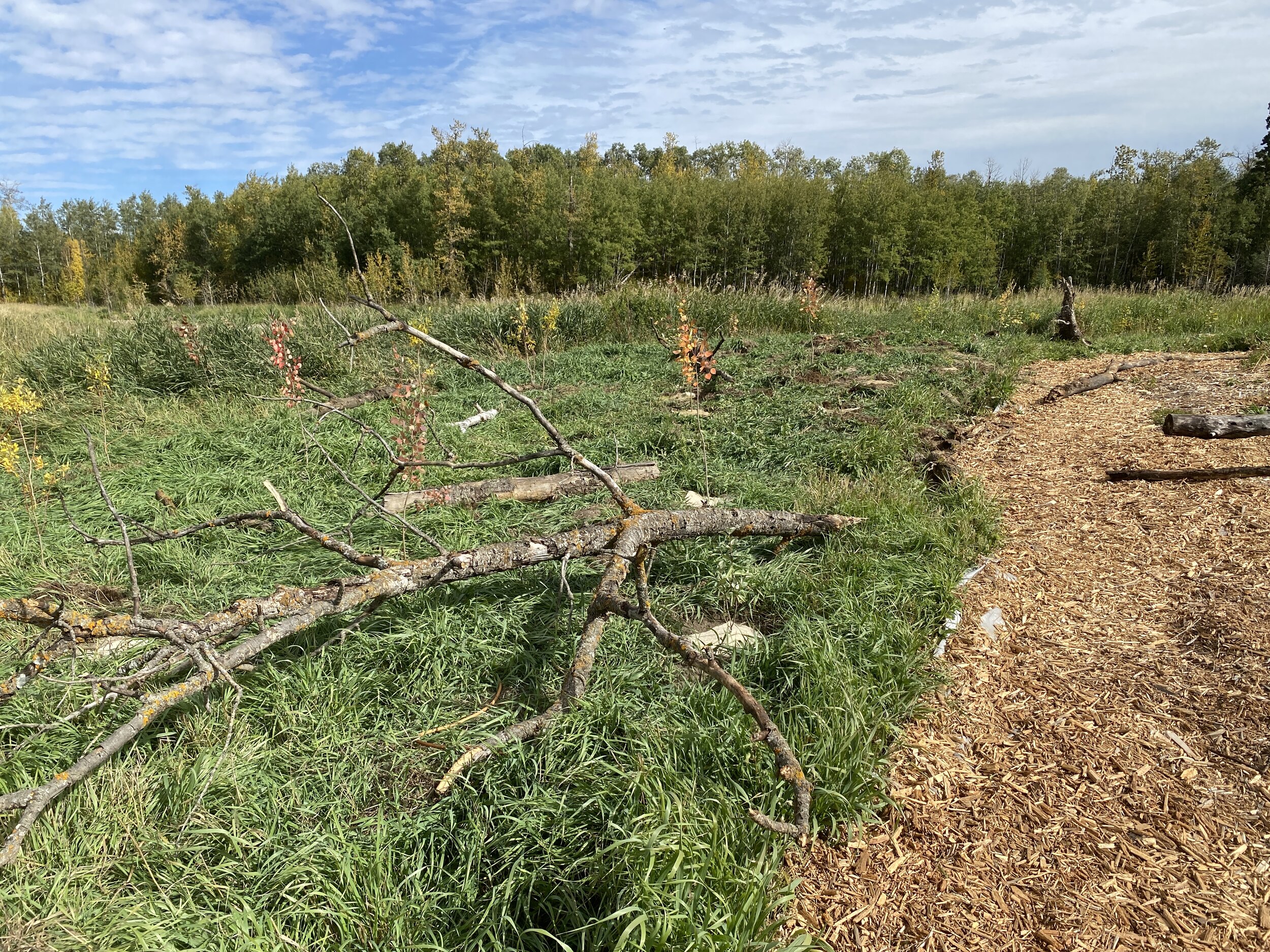
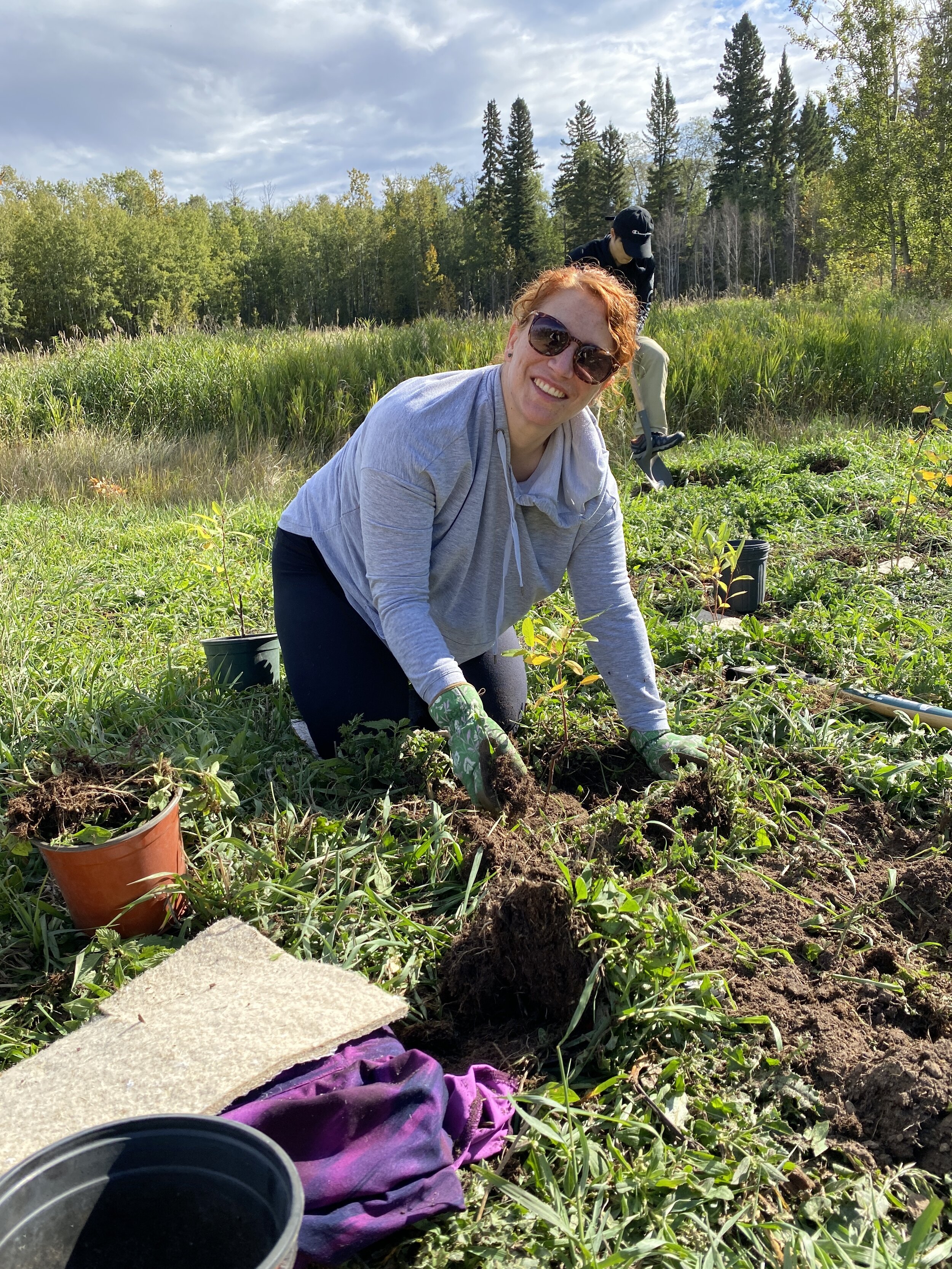
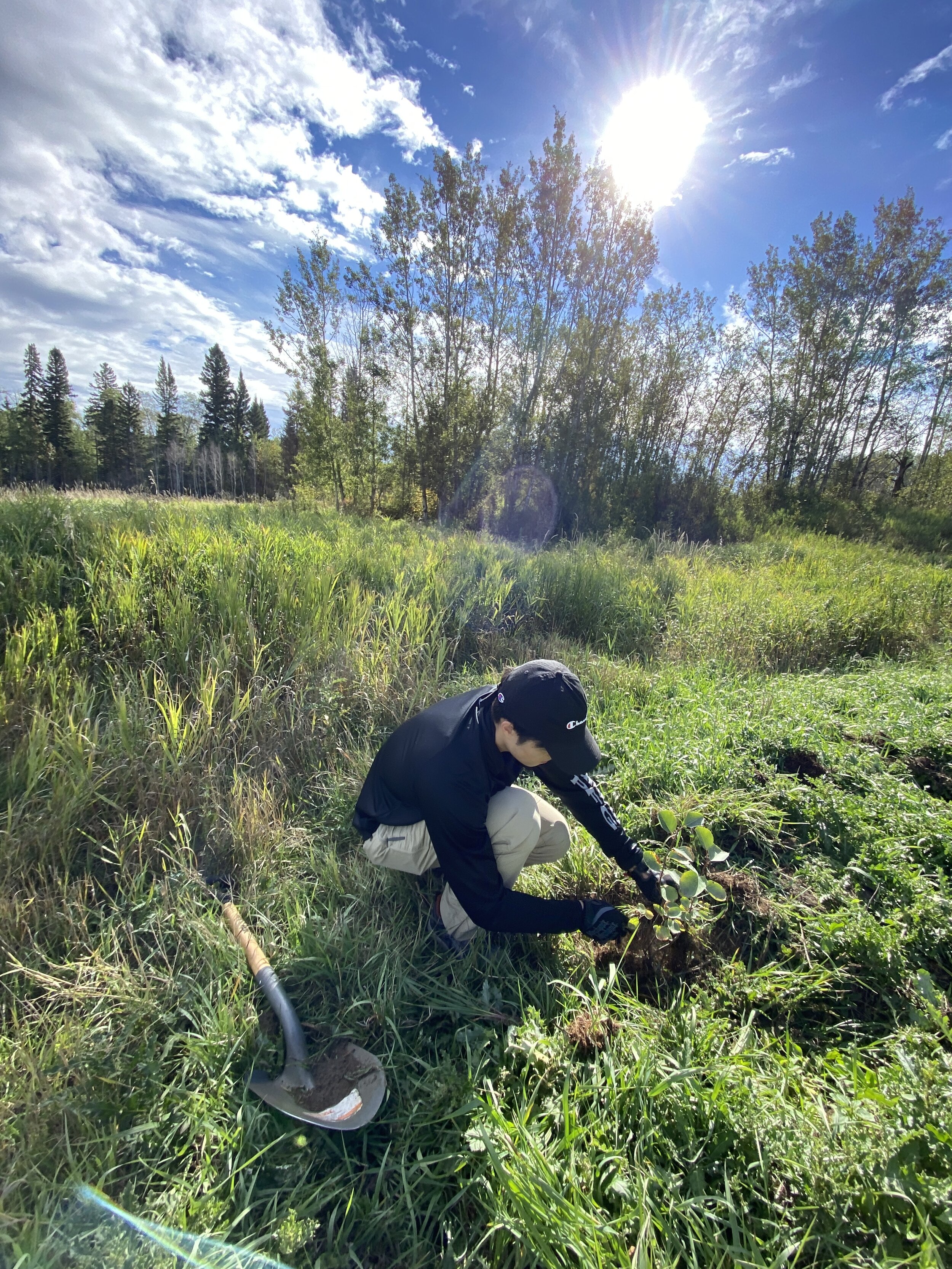

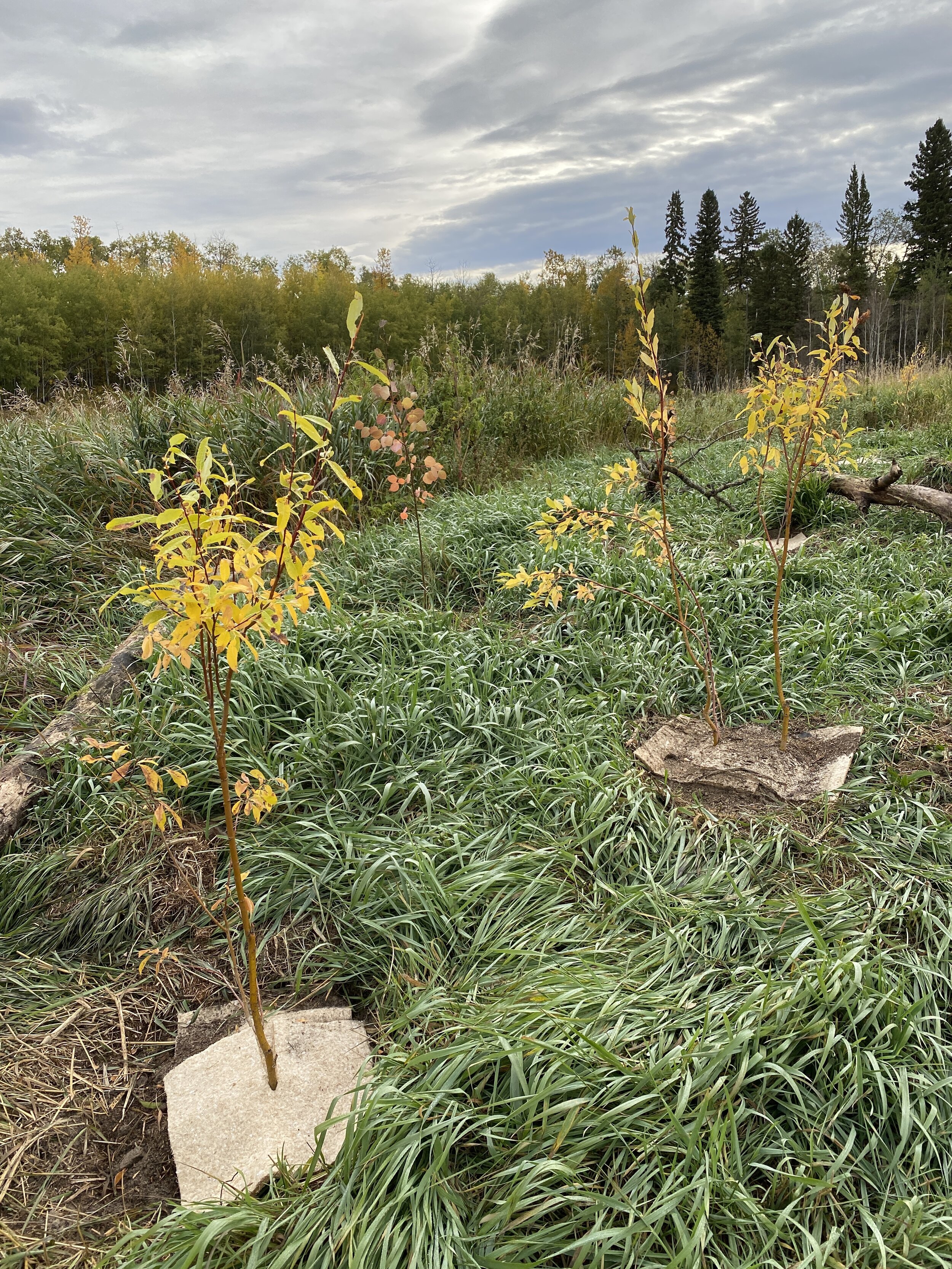
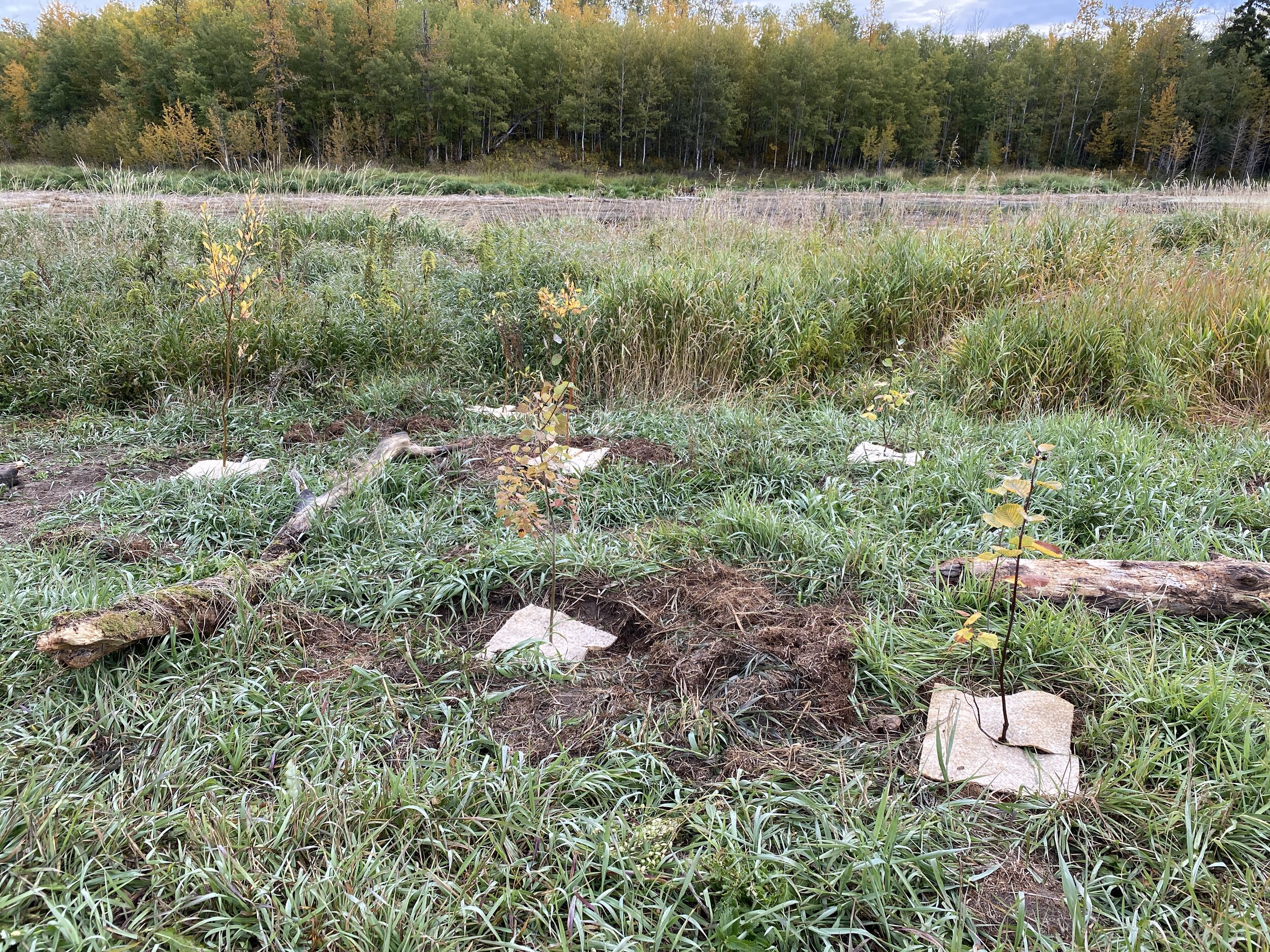
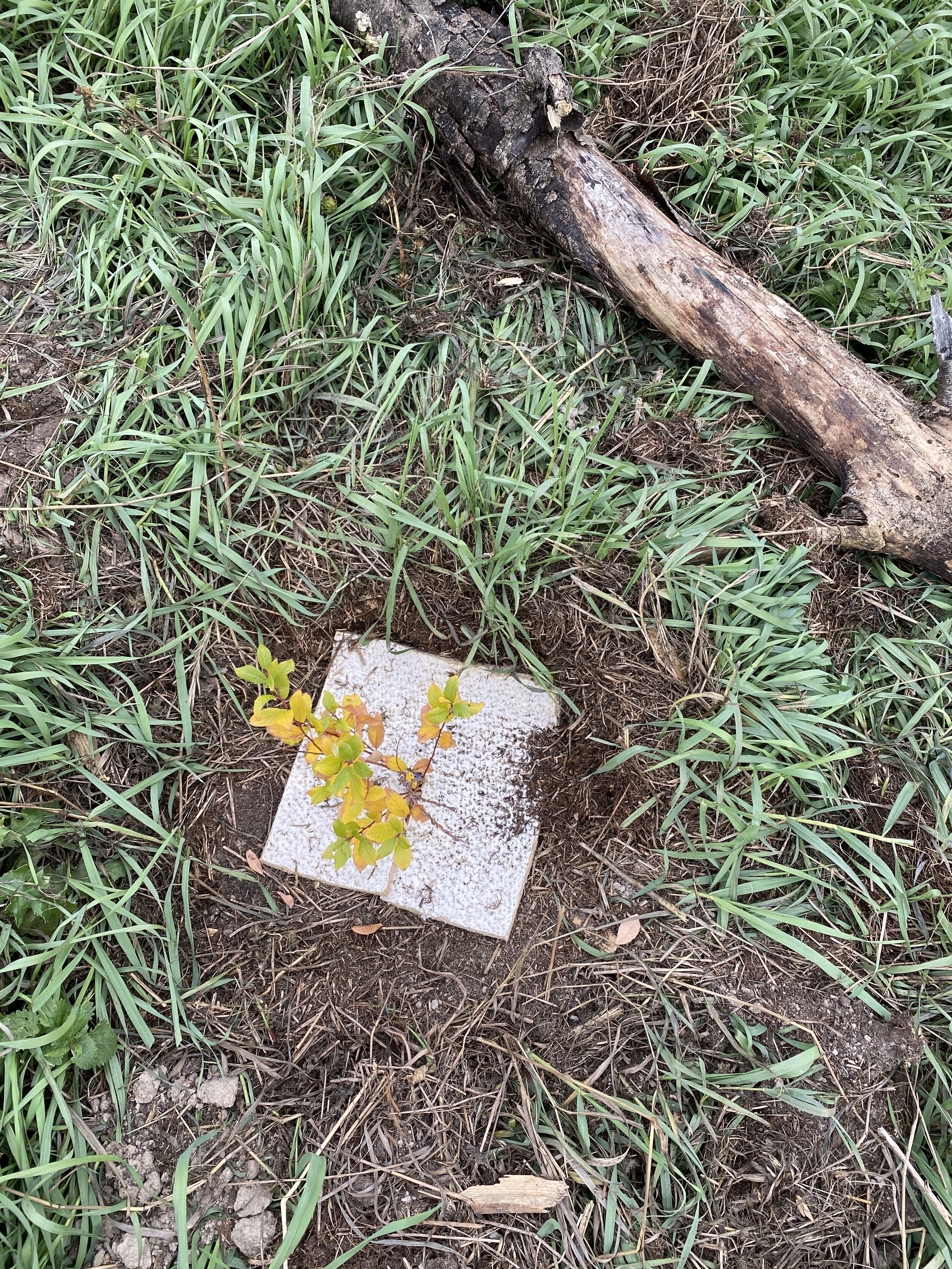

We also collected dead fallen logs to place throughout the garden and planted shrubs. This will add additional nesting habitat for tunnel-nesting bees and other insects, introduce fungi and microorganisms from the forest ecosystem, and provide nutrients as they continue to decompose. We tried to emulate a natural forest as much as possible in our design, and the fallen logs will provide needed structure and dimension.
To pull everything together and educate our visitors on what they are seeing, we also installed an educational sign and one of our bee hotels. You can learn more about bee hotels and how they work on our Protecting Pollinators resource page.
Lastly, we worked with the Alberta Trees Foundation this summer to plant 30 spruce trees near the garden, at the edge of the existing forest. For the best chance of success, we planted the trees with some soil from the forest ecosystem to inoculate the soil with forest microorganisms and fungi.
Maintaining the Garden
The work doesn’t end with the planting! We need to make sure that the garden stays healthy and well cared for in the long run. With funding from the Alberta Conservation Association, we held several volunteer events to remove weeds from the areas surrounding the garden to maintain native pollinator habitat.
We are also grateful to have our Conservation Land Stewards at the Smith Blackburn Homestead help us monitor and maintain the garden over the long term.
Conservation is a community effort, and we would like to thank our partners, funders, volunteers, and other supporters for helping make this project possible. Special thanks to Alberta Ecotrust, Edmonton Native Plant Society, Medieval Manor Gardens, Alberta Conservation Association, and One Tree Planted.










